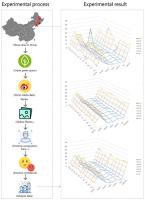Urban Forestry & Urban Greening ( IF 6.0 ) Pub Date : 2021-04-08 , DOI: 10.1016/j.ufug.2021.127133 Xun Zhu , Ming Gao , Ran Zhang , Bo Zhang

|
In rapid urbanization processes, the high density and fast rhythm of the urban living environment lead to mental tension, life pressure, anxiety, and other problems for people, which facilitates negative emotions. Studies have confirmed that an urban green space is a “restorative environment" that can effectively alleviate negative emotions and improve moods. Social media data can be objectively quantified to evaluate people's emotional responses to urban green spaces. Based on the analysis of social media data, this study examines whether there are differences in emotions linked to locations, with the data extracted from microblogs similar to Twitter in three different cities. Seven emotions (happiness, fear, surprise, anger, disgust, neutral, and sadness) were identified using online cognitive services on photos collected from microblog data. Three emotion-based indexes (emotion intensity index, emotion intensity index, emotion evenness index) were used to expand the urban green space pair from the spatial perspective of research on the influence of emotion. The results show that there are significant correlations among age, gender, emotional diversity, area, accessibility, NDVI, and emotion. The results also show that (1) the higher the NDVI of urban green space, the greater the probability and intensity of emotion in green space, and the more happiness emotion people show. (2) there is a significant positive correlation between urban green space area and EEI, and a significant negative correlation between urban green space area and EPI, EII, which is just opposite to the NDVI results. (3) Optimistic and positive emotions are widely expressed in cities, and happiness is expressed most and strongly. The negative emotions such as fear, anger, and trouble are less expressed, and the expressions of emotions in cities are highly similar. With the increase of age, happiness emotion increased, and sadness emotion decreased.These results show that the urban green space planning can be used to intervene in the expression of human emotion based on where a person lives. In the future, the planning and design of urban green spaces based on the reasonable balance and combinations of area, accessibility, and the NDVI can enhance the emotional enthusiasm for these areas. Improving the planning and design of the existing urban parks and green spaces with positive intervention methods can provide a feasible solution to meet the growing population's emotional recovery needs.











































 京公网安备 11010802027423号
京公网安备 11010802027423号